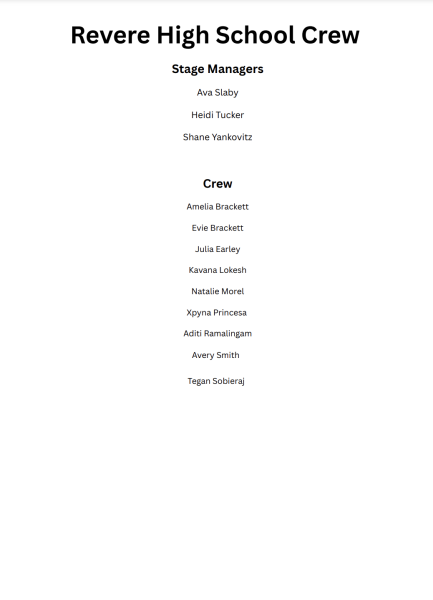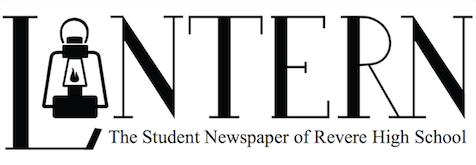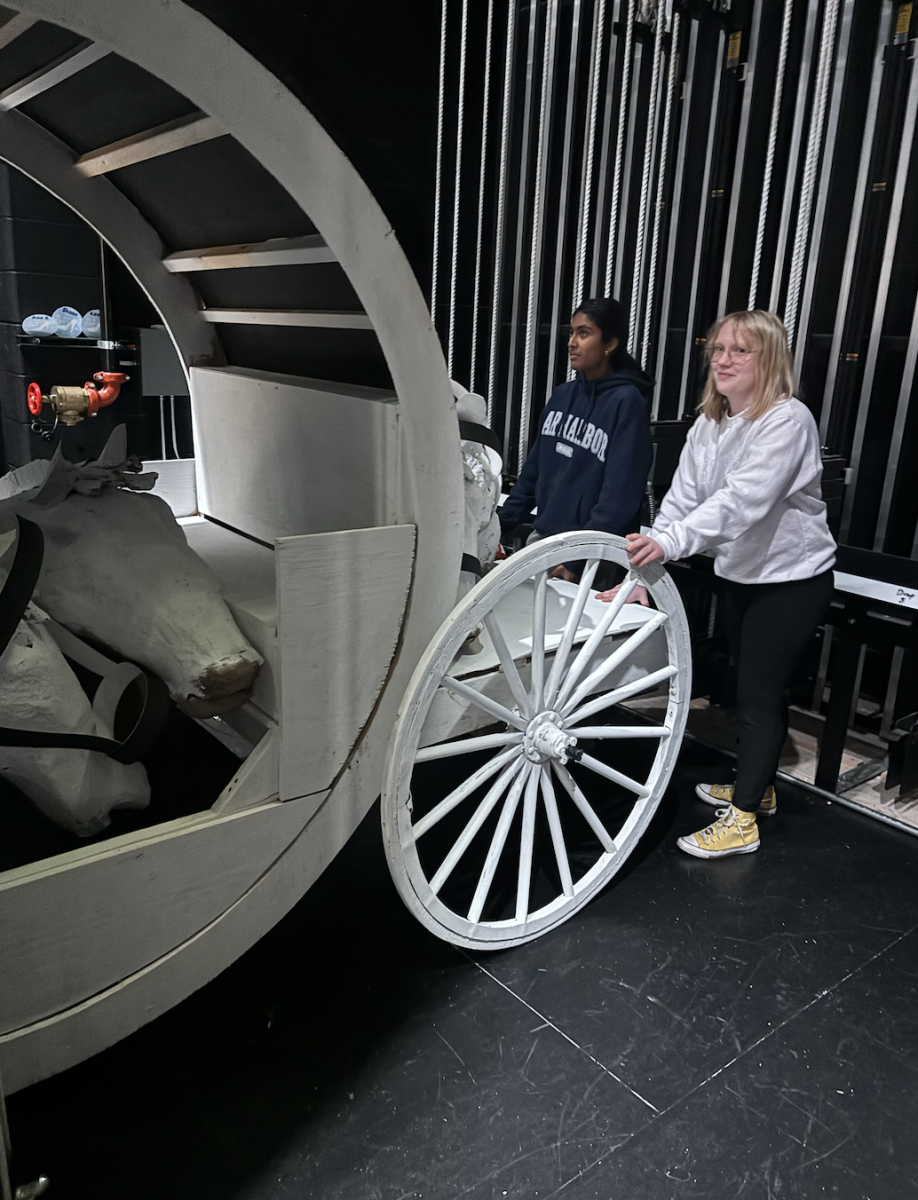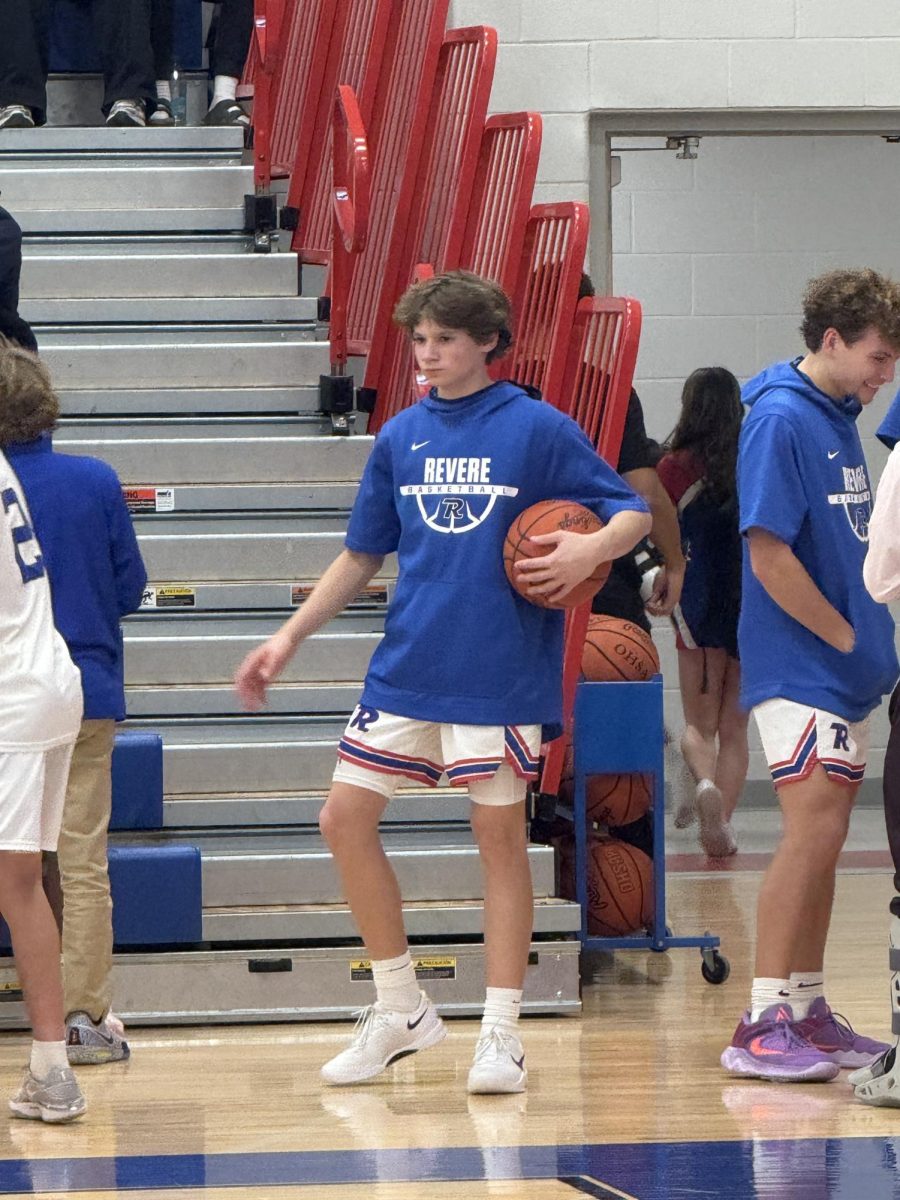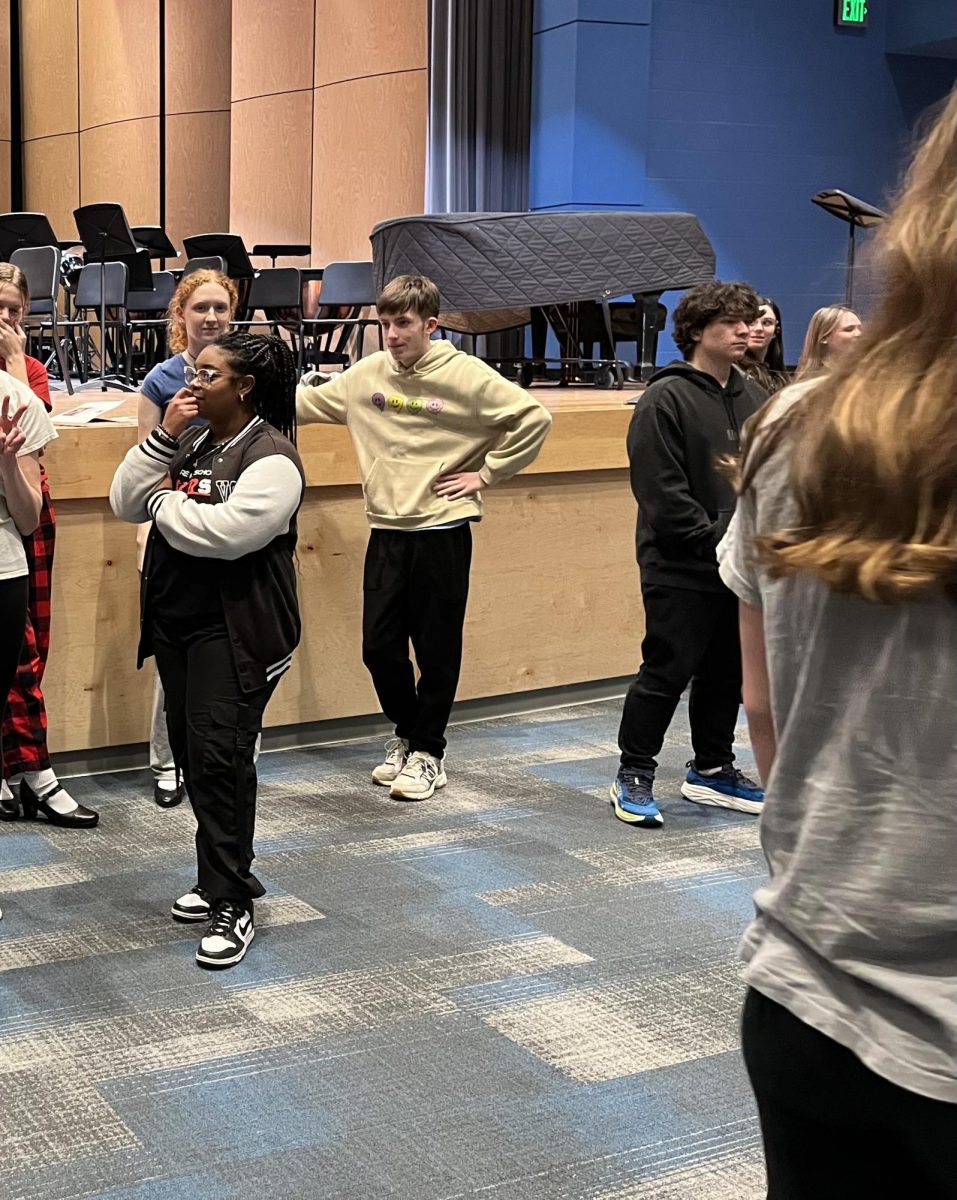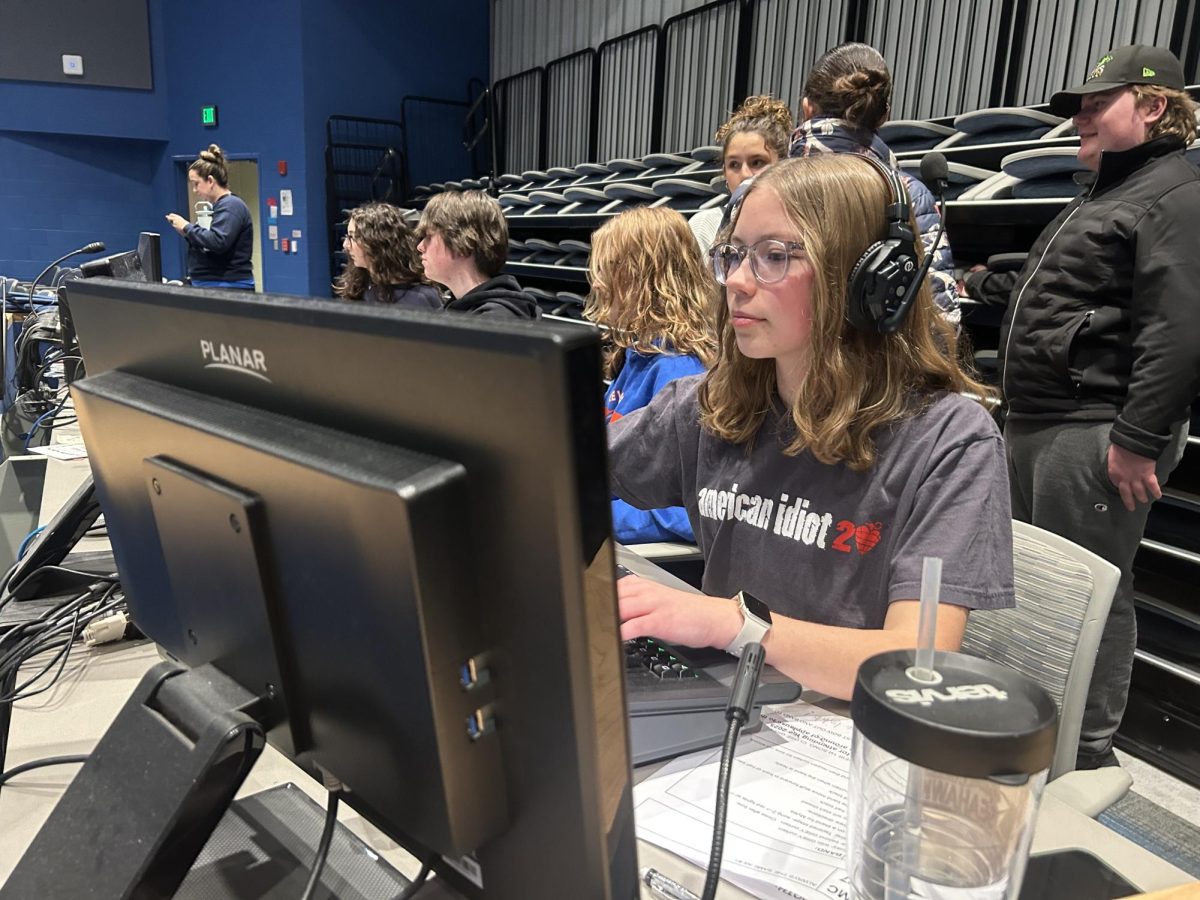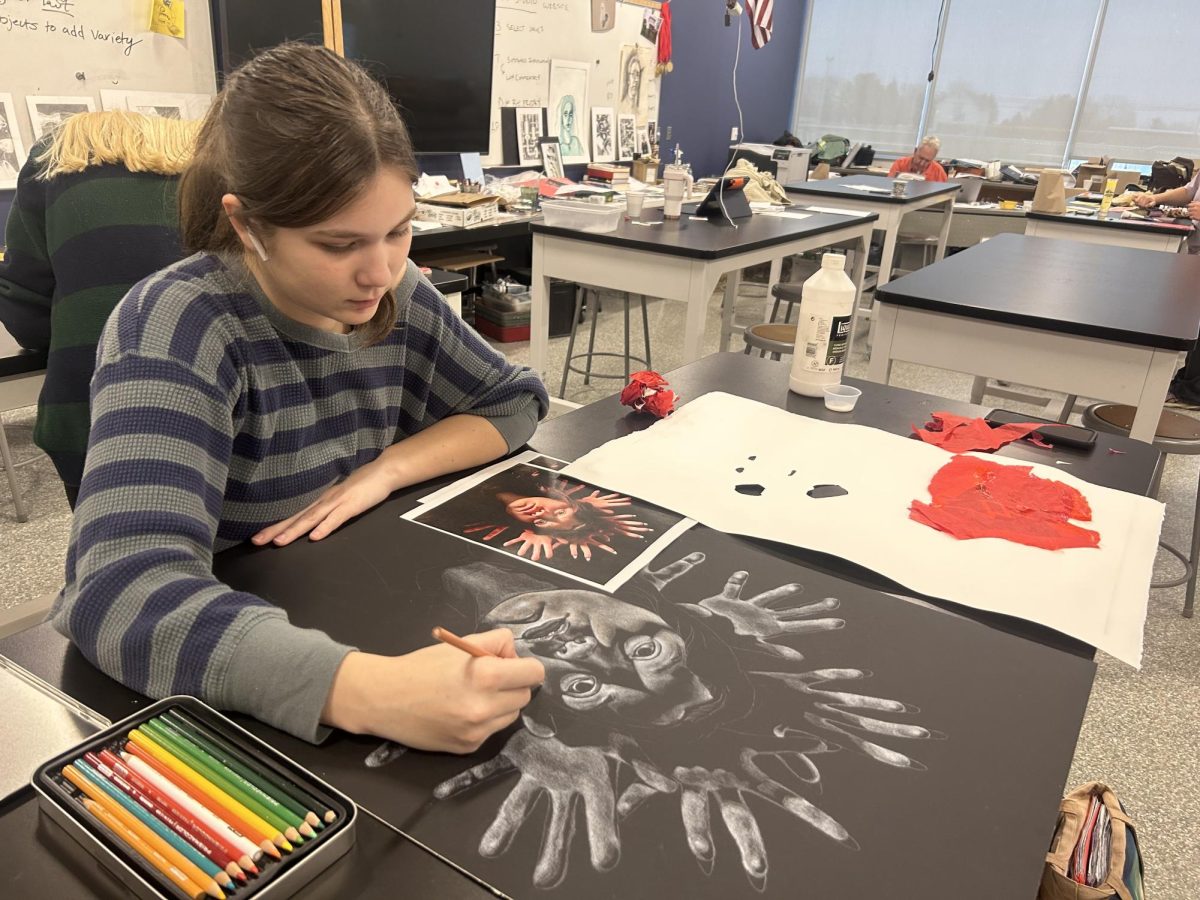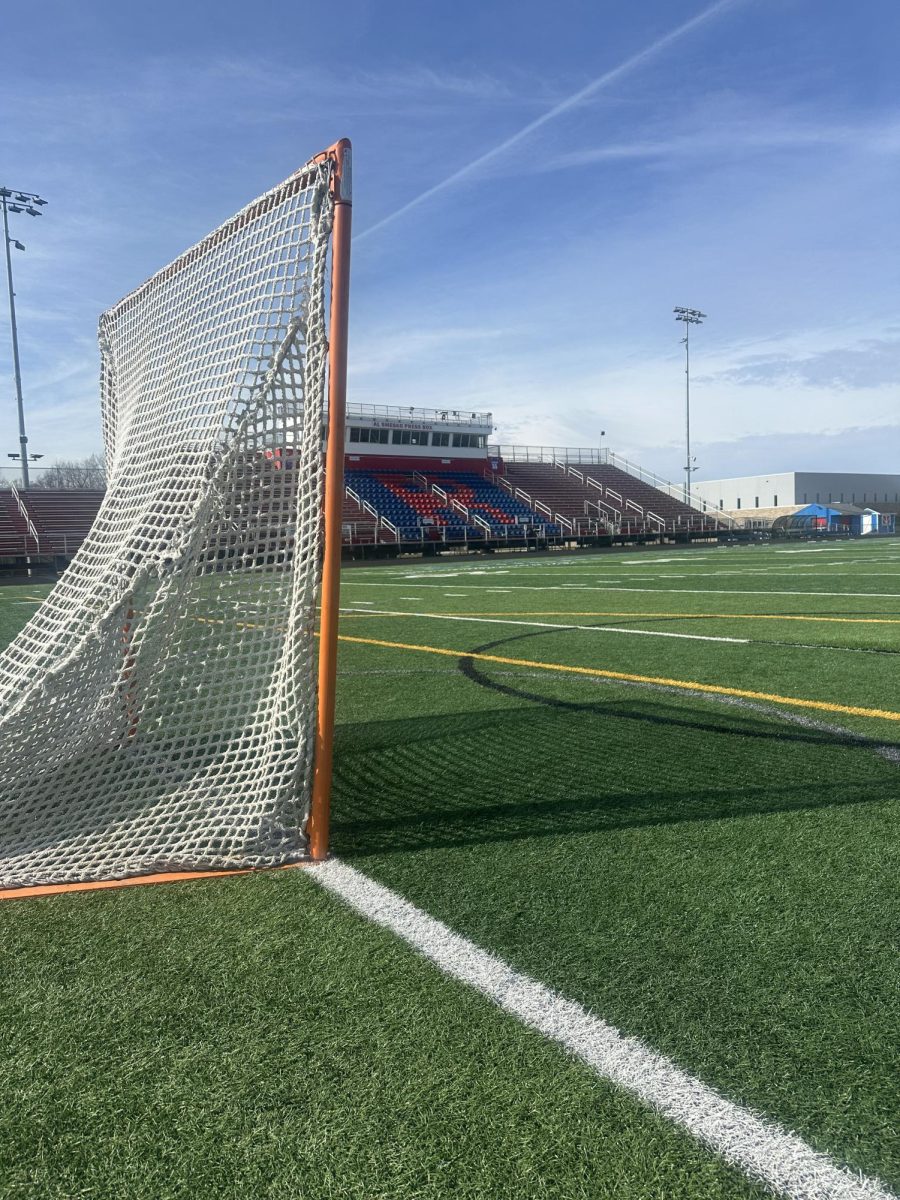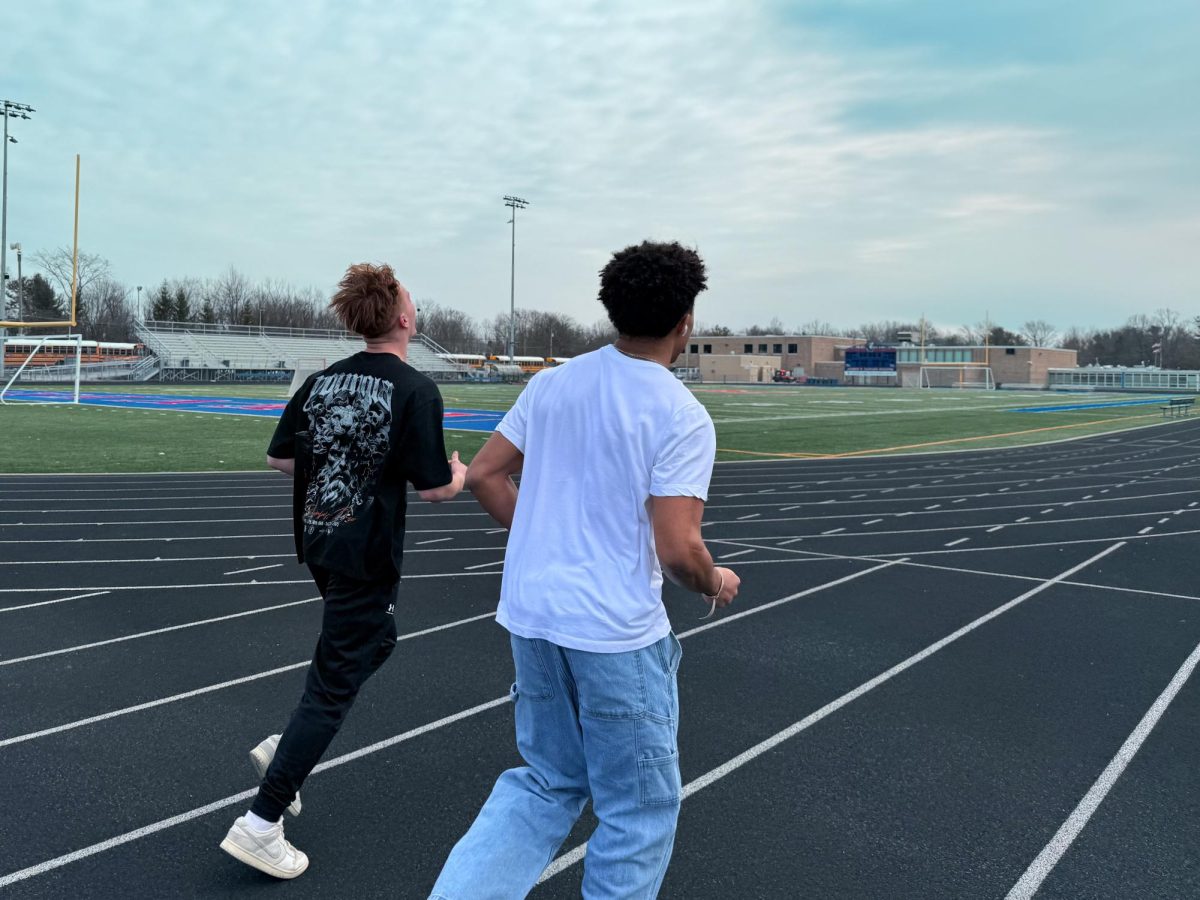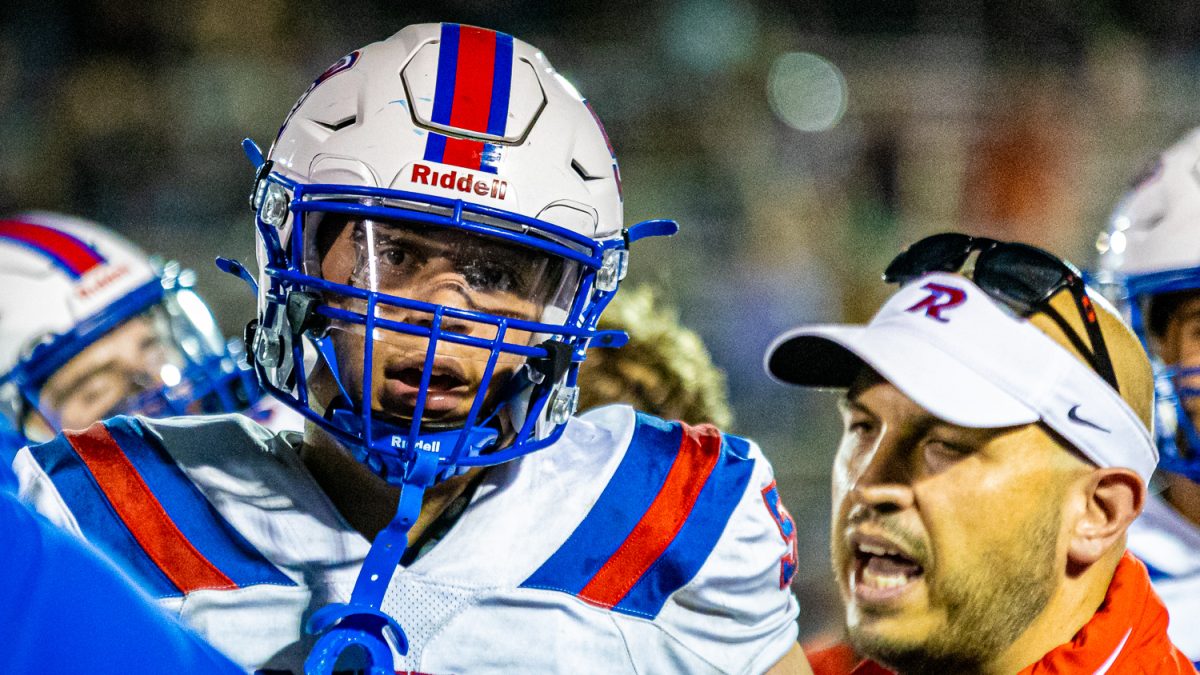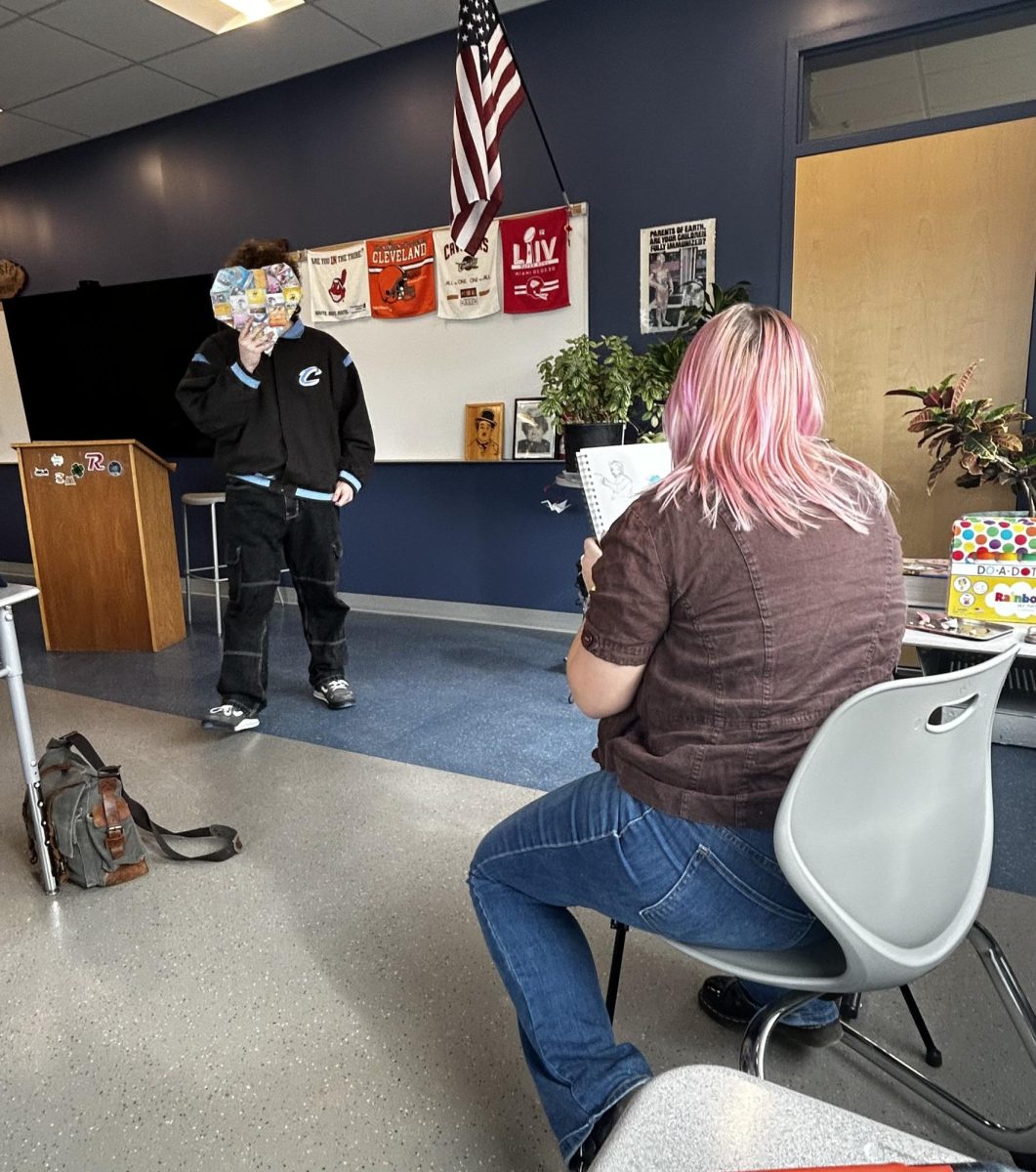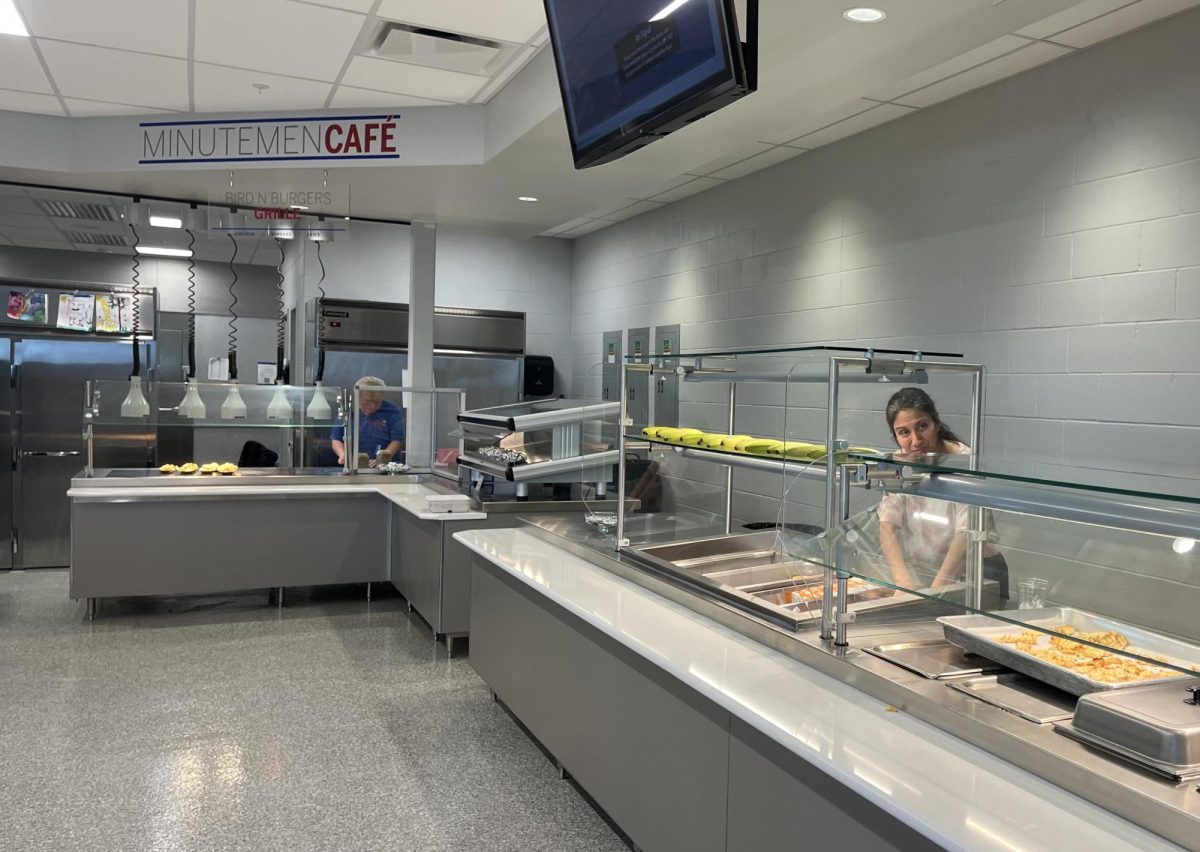Typically when people go to a musical, like the one held at Revere High School (RHS) last weekend, Cinderella, they pay attention to the actors. However, it is crucial to recognize those in the wings, the people in the crew.
The crew is the group of students that work every day after school in order to build the set of the school musical and play. Then, during the musical they make sure the props are in the correct placements and run the backstage of the show.
To run a production takes a lot of people. One of the people involved in putting a show together is Bob Pierson, the group’s assistant director and art teacher at RHS. He works mainly with the crew rather than the actors. Pierson helps the crew create the set, and during the musical he hands it off to the senior stage managers.
“The crew is made up of students that have helped out with scenery. . . . Since the beginning of the year, they often work for both productions, but to get on crew requires putting in a certain amount of hours helping out with the stage construction, stage painting. Generally they dedicate a lot of time,” Pierson said.
Picking the crew is a long process that starts with volunteering to build the set. Out of those volunteers, Pierson chooses the crew and the stage managers. Pierson described how they kept track of volunteer hours during set build.
“We were very strict about signing in and signing out. . . . The crew is picked from the people that have the most hours, volunteer hours that are recorded, and then when the scenery is finished [it is usually] tech week,” Pierson said.
The students who have the most hours and experience backstage are chosen as stage managers. The stage managers of the show organize and control the backstage crew. They put in a lot of work before and during the show. The stage managers that Pierson chose this year are Heidi Tucker, Ava Slaby and Shane Yankovitz. Tucker explained her responsibilities.
“I lead the organization of stage left. I make sure the set pieces are ready to go out and assign moving responsibilities to specific people in [the] crew to make sure the change can go as quickly as possible,” Tucker said.
Each stage manager organizes the crew before and during the show. The work that goes into the play before the actual performances is building the set. For a few hours after school every day for months before a play or musical, the crew helps build scenery.
“Scenery is designed by me and maybe sketched out to some degree by me, but it’s all made by Revere students. . . . We used four backdrops and we had two rollout sets. So that’s five scenes. And then we had to build a carriage, I had never built a carriage,” Pierson said.
Building unique items requires teamwork and a lot of creativity between sourcing materials and actually constructing the object. The crew uses their time after school to focus on these set builds and create new things.
Then, after the set construction is finished, the crew transitions into tech week, a two week period before the official performance where they start to work backstage rather than on set construction. Yanovitz explained the process.
“For weeks before we [worked] to paint all the sets and constructions. Then, two weeks in advance [of the performance], we have tech week where we transition to working backstage and moving the props,” Yankovtiz said.
After tech week, it is officially show time. The crew works backstage at every performance to move the props and set the scene for the performances. Tucker described some of the crucial tasks the crew takes care of during a show.
“We move all the set pieces, including walls, furniture, backdrops and curtains. We check that everyone has their appropriate props, quick changes, and are set onstage before the lights come up,” Tucker said.
Putting on a musical involves many students and teachers divided between actors, crew members and directors. All of these people play an integral part in manufacturing the productions at RHS. Tucker explained the roles that the teachers had this year.
“Aside from the directors, Mrs. Pine and Mrs. Johnson, who do so much to put the show together, Mr. Pierson manages set construction and crew. He designs the set pieces and teaches us techniques to create the vision,” Tucker said.’
The show this year, Cinderella, was particularly demanding with the amount of set construction and backstage prop movements, but the crew members took on the task with creativity and hard work. Pierson described why he enjoyed this show.
“This ranks up there [in my favorites] as far as creative things to do. . . . My preference for the plays that I like are the ones with the goods with really heartfelt stories,” Pierson said.
Although Cinderella was certainly challenging, the crew took it on and made sure the set ran smoothly throughout the show. Tucker explained that even though the show was demanding and complicated, she still enjoyed working on it.
“Cinderella is a much more complicated show from a crew standpoint. We have so many beautiful, detailed backdrops and set pieces, and the most exceptional part is the carriage and the horse heads. There is a lot going on in the show, and it’s cool to see everyone working together to make the show possible,” Tucker said.
The crew is a very tight-knit group with many traditions backstage. One of the longest lasting traditions is forehead painting. They paint symbols on their forehead with paint before every show. Tucker elaborated on the roots of the tradition.
“It started before I was at the high school. Basically, every show the crew has a theme, and we paint something that fits into the category. It could be foods, letters, types of weather, or whatever else we come up with,” Tucker said.
Every year, there is new leadership within the crew. This year there were three seniors that worked hard behind the scenes. Pierson described their leadership and qualities.
“You can count on people who always show up. . . . It’s been reliable, and it’s been handed off from one senior [to] the next . . . for the past at least 25 years,” Pierson said.
The crew is a group of students that dedicates time every day after school to constructing sets and moving props for RHS’s performances. They use their experience to build props that require creative thinking and find ways to solve problems backstage. It is important to recognize the people behind the scenes of every play because of this hard work.